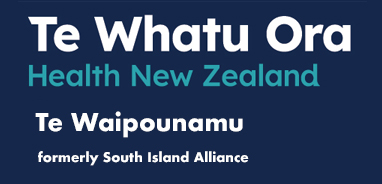 |
| UK public health specialist Lucy Saunders presents on the Healthy Streets initiative in Christchurch earlier this month. |
Making streets more inviting and public transport more accessible is part of an approach that could be adopted across the South Island to improve health and social connection.
UK public health specialist Lucy Saunders, who is the driving force behind the ‘Healthy Streets’ initiative, visited Christchurch earlier this month to engage with planners, local government, social services and others from across the region. Supported by the South Island Alliance, Environment Canterbury, and the Canterbury/West Coast branch of the Transportation Group to visit the city during her stay in New Zealand, Lucy spoke about Healthy Streets at a workshop, governance breakfast, and a public hui. Lucy was also the keynote speaker at this year’s ‘2 Walk and Cycle’ conference in Palmerston North.
Rather than the traditional approach of tackling physical inactivity by putting the responsibility on the individual and encouraging them to do more sport or be active, Healthy Streets focuses on incidental exercise, where people are supported by their environment. “It’s about little and often exercise throughout the day that you don’t have to pay for or even think about,” Lucy says. “Some of the healthiest communities in the world where people are the most active is not because they are highly motivated to exercise or are really sporty, it’s because it’s a necessity of their daily life that they do a little bit of exercise throughout the day.”
Lucy currently leads on the integration of transport and public health in London, supporting Transport for London, boroughs and advocacy organisations. Her approach has revolutionised street planning in the UK. Roading that promotes safe walking or cycling over short car journeys will get people thinking, and changing their routines, she says.
“We need to make our streets inclusive to everyone. It’s about looking at the spaces between buildings and asking – is this meeting our basic, fundamental needs? Do I feel safe? Is the air clean? If I need to stop, is there shelter and somewhere to rest? Many streets don’t meet these criteria, which all make it safer and easier for people to include healthy activity into their daily lives by cycling and walking, or at least walking to the bus stop.”
 |
| Len Fleet of Environment Canterbury, Lucy Saunders of Healthy Streets, Jane Murray of Nelson Marlborough Health and Tom Scott of Southern DHB, discuss how the initiative could be used in cities and towns across the South Island. |
Jane Murray, Health in All Policies Advisor for Nelson Marlborough Health, attended all three events and says it was inspiring to hear an expert in the field talk so passionately about creating healthy streets. “Lucy made it easy to understand her concepts, not only the content of her Healthy Streets programme, but the different ways she adapts her presentations to a range of audiences.” Jane says she can see Lucy’s concepts being brought into submission work and collaborative project work locally. “Since returning to Nelson, other transport engineers in the district also saw Lucy speak in Palmerston North and are interested in carrying on conversations about it here.”
Tom Scott, Team Leader of Healthy Environments for Public Health South at Southern DHB, attended two of Lucy’s events and says he found her work, ”very insightful”. “The learnings will be imparted to our staff, in the hope we can engage even more effectively with our transport stakeholders. Moving the conversation away from promoting active transport to strategies for disincentivising motorised transport was a key learning for me.”
Lucy says there are many things different individuals and agencies can do to make changes. “Delivering Healthy Streets is everyone’s responsibility, not just one leader or agency, so it was really encouraging to see Christchurch City Council, health and ECAN working together to keep people out of hospitals and living well in the community.”
Find out more at www.healthystreets.com










